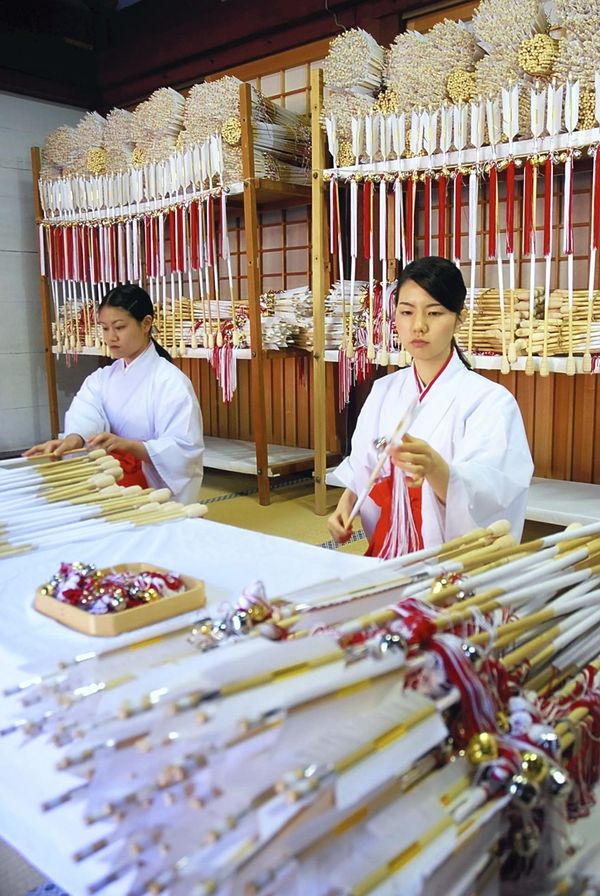New Year’s Japanese good luck charm, Hamaya
December 4, 2013 The Yomiuri Shimbun
With the arrival of December, attendants at Tsurugaoka Hachimangu shrine in Kamakura, Kanagawa Prefecture, are busy making New Year’s hamaya, or evil-repelling arrows. The lucky arrows are believed to ward off demons and ensure the safety of family members. The shrine will make about 200,000 60-centimeter arrows and 45,000 94-centimeter arrows by New Year’s Eve.

- Miko preparing hamaya (good fortune arrows) at Tusurgaoka Hachimangu in Kamakura. It:s said the origins lie in the Edo era custom of giving newborn boys a decorative set of bow and arrows.
Extract from the Kokugakuin Encyclopedia of Shinto…
Hamaya are popular among New Year’s visitors to shrines as one type of good-luck charm or engimono. From the Edo to the early Meiji period, hamayawere given as gifts to celebrate the first New Year of a male baby’s life, frequently in a set together with a pair of decorative bows calledhamayumi (“demon-breaking bows”). The custom of selling the arrow alone is thought to be a later abbreviation of this custom. Even today, the custom persists of standing such symbolic bows and arrows at the northeast and southwest corners of a new house (called kimon, the directions thought particularly susceptible to evil influences) on the occasion of the roof-raising ceremonies (jōtōsai). The etymological significance of hama is not clear, but it is said to have been an ancient word for an archery target or an archery contest.

Leave a Reply